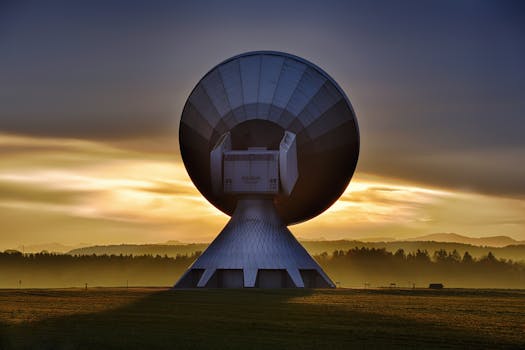MEO Satellites: Revolutionizing Global Connectivity with Medium Earth Orbit Technology

MEO Satellites: Introduction to Medium Earth Orbit Technology
MEO satellites, or Medium Earth Orbit satellites, are a type of satellite that operates in a medium earth orbit, which is approximately 2,000 to 36,000 kilometers above the Earth’s surface. This orbit is higher than low earth orbit (LEO) but lower than geostationary orbit (GEO). MEO satellites are designed to provide a range of services, including navigation, communication, and Earth observation.
History and Development of MEO Satellites
The concept of MEO satellites dates back to the 1960s, when the United States and the Soviet Union began exploring the use of medium earth orbit for satellite applications. However, it wasn’t until the 1990s that MEO satellites started to gain popularity, with the launch of the first Global Positioning System (GPS) satellites. Today, MEO satellites are used for a variety of purposes, including satellite navigation, mobile communications, and Earth observation.
Advantages of MEO Satellites
MEO satellites offer several advantages over traditional GEO satellites. One of the main benefits is their lower latency, which is the time it takes for a signal to travel from the Earth to the satellite and back. MEO satellites have a latency of around 20-30 milliseconds, which is significantly lower than the 200-300 milliseconds experienced by GEO satellites. This makes MEO satellites ideal for applications that require real-time communication, such as video conferencing and online gaming.
Another advantage of MEO satellites is their wider coverage area. Because they are in a higher orbit than LEO satellites, MEO satellites can cover a larger area of the Earth’s surface, making them ideal for applications that require global coverage. Additionally, MEO satellites are less affected by atmospheric interference, which can degrade the signal quality of LEO satellites.
Applications of MEO Satellites
MEO satellites have a range of applications, including satellite navigation, mobile communications, and Earth observation. One of the most well-known applications of MEO satellites is the Global Positioning System (GPS), which provides location information to GPS receivers on the ground. MEO satellites are also used for mobile communications, such as satellite phone networks and broadband internet services.
In addition to these applications, MEO satellites are also used for Earth observation, such as monitoring weather patterns, tracking natural disasters, and observing the Earth’s climate. They are also used for scientific research, such as studying the Earth’s magnetic field and monitoring the effects of climate change.
Future of MEO Satellites
The future of MEO satellites looks promising, with several new constellations planned for launch in the coming years. One of the most notable constellations is the O3b Networks constellation, which will provide high-speed internet services to underserved communities around the world. Another notable constellation is the OneWeb constellation, which will provide global internet coverage and support a range of applications, including satellite navigation and Earth observation.
In conclusion, MEO satellites are revolutionizing the way we communicate and access information globally. With their unique medium earth orbit, they offer faster and more reliable connections than traditional GEO satellites. As the demand for global connectivity continues to grow, MEO satellites will play an increasingly important role in meeting this demand and providing a range of services to users around the world.
Key Players in the MEO Satellite Industry
There are several key players in the MEO satellite industry, including satellite operators, manufacturers, and launch providers. Some of the notable satellite operators include Intelsat, SES, and O3b Networks, which provide a range of services, including satellite communications and Earth observation.
Manufacturers, such as Boeing and Lockheed Martin, play a critical role in the development and production of MEO satellites. These companies design and build the satellites, as well as provide launch services and other support functions.
Launch providers, such as Arianespace and SpaceX, are responsible for launching MEO satellites into orbit. These companies provide the necessary infrastructure and expertise to ensure that the satellites are successfully deployed and begin operating as intended.
Challenges Facing the MEO Satellite Industry
Despite the many advantages of MEO satellites, the industry faces several challenges, including regulatory issues, competition from other satellite orbits, and the need for continuous innovation. One of the main regulatory challenges is the allocation of spectrum, which is a limited resource that must be shared among different satellite operators and other users.
Another challenge facing the MEO satellite industry is competition from other satellite orbits, such as LEO and GEO. These orbits have their own advantages and disadvantages, and the choice of orbit depends on the specific application and requirements of the user.
Finally, the MEO satellite industry must continuously innovate to stay ahead of the competition and meet the evolving needs of users. This includes developing new technologies, such as advanced propulsion systems and more efficient antenna designs, as well as improving the overall performance and reliability of the satellites.
